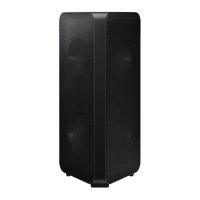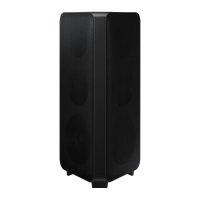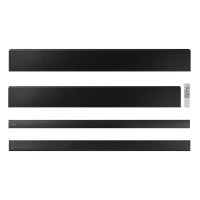How Do I Prevent My Speaker From Vibrating Too Much at High Volumes?
We’ve all been there – cranking up the volume to enjoy our favorite tunes, only to be greeted with excessive speaker vibration that distorts the sound and can be a bit annoying. Whether you're blasting music at a party or watching a movie with intense sound effects, vibrations can reduce the quality of your audio experience.
But don’t worry! If you’re dealing with rattling or shaking speakers at high volumes, there are several ways to reduce or prevent these vibrations. In this blog post, we’ll explore why this happens and what you can do to fix it.
1. Why Do Speakers Vibrate at High Volumes?
First, let’s understand why this happens. When you turn the volume up, the speaker drivers (the part of the speaker that produces sound) move rapidly to produce sound waves. At higher volumes, the drivers are pushed to their limits, and the resulting movement can cause the speaker casing or surrounding materials to vibrate.
This vibration often happens because of:
Low-frequency sounds (bass): These are powerful and cause the speaker cone to move a lot, which can cause rattling.
Loose parts: Over time, screws, connections, or internal components may loosen, making it easier for vibrations to occur.
Surface and placement issues: If your speakers are placed on hard or unstable surfaces, they’ll have more room to shake and cause noise.
2. How to Prevent Speaker Vibrations at High Volumes
Here are some steps you can take to minimize or eliminate vibrations and get clearer sound at higher volumes:
1. Secure the Speaker on a Stable Surface
The first and most important step is to ensure your speakers are placed on a stable, non-resonant surface. A solid, heavy surface will absorb vibrations better than something flimsy.
Avoid placing your speakers on glass or metal surfaces, as these can amplify vibrations. Instead, place them on wooden tables or dedicated speaker stands.
2. Use Speaker Isolation Pads or Feet
Speaker isolation pads are designed to reduce the amount of vibration transferred from the speaker to the surface. They help to dampen vibrations and can significantly improve sound clarity, especially when listening at high volumes.
These pads work by creating a buffer between the speaker and the surface, reducing the effect of low-frequency resonance that causes rattling.
3. Tighten Loose Parts
Loose screws or parts inside the speaker can contribute to excessive vibration. Check for any loose connections or rattling pieces inside the speaker and tighten them up.
If the speaker has removable grills, make sure they’re tightly secured as well.
4. Try a Speaker Stand or Mount
If your speakers are sitting directly on the floor or a table, try mounting them on speaker stands or wall mounts. Elevating the speakers will reduce the amount of vibration that gets transferred to the surface.
Wall mounts can be particularly useful for bookshelf speakers and help avoid direct contact with vibrating surfaces.
5. Adjust the Speaker Placement
Sometimes, vibration issues can be solved just by adjusting the speaker’s position. Try moving the speakers away from corners or walls where bass can bounce off hard surfaces and amplify vibrations.
Position the speakers away from vibrating objects, such as windows, thin walls, or furniture that might vibrate and amplify the unwanted noise.
6. Lower the Bass Levels
While you may love the deep rumble of bass, excessive bass can cause a lot of vibration. If you notice that the bass is causing vibrations, try lowering the bass frequencies on your audio source or sound settings. Most audio systems or apps have an equalizer setting where you can adjust bass, midrange, and treble.
7. Consider a Subwoofer Isolation Pad
If you're using a subwoofer as part of your speaker setup, it’s important to keep it isolated from the floor and nearby objects. Subwoofer isolation pads or decoupling pads can be particularly useful in reducing low-frequency vibrations that might otherwise cause rattling.
These pads are designed to absorb vibrations from the subwoofer and prevent them from transferring to the floor or furniture.
8. Upgrade Your Speaker Cables
While this might seem unrelated, using high-quality speaker cables can sometimes help reduce distortion and rattling caused by poor connections. Weak or loose connections can contribute to sound distortion, especially at high volumes.
3. Additional Tips to Improve Overall Sound Quality
Aside from reducing vibrations, here are a few more things you can do to improve your sound quality at high volumes:
Use an amplifier: If you’re not already using an amplifier, it can help you achieve a cleaner sound at higher volumes, reducing strain on the speakers.
Room acoustics: Your room’s acoustic environment plays a big role in how sound behaves. Try to reduce sound reflections by placing soft materials like rugs, curtains, or foam panels around the room to absorb sound and prevent unwanted vibrations.
4. Final Thoughts
Speaker vibrations at high volumes can be a major annoyance, but with the right steps, you can minimize or completely eliminate them. By ensuring your speakers are on a stable surface, using isolation pads, tightening any loose parts, and adjusting your audio settings, you can enjoy clean, undistorted sound even at high volumes.
Don’t let vibrations ruin your music or movie experience—try out these tips and get ready for clearer, more powerful sound.



